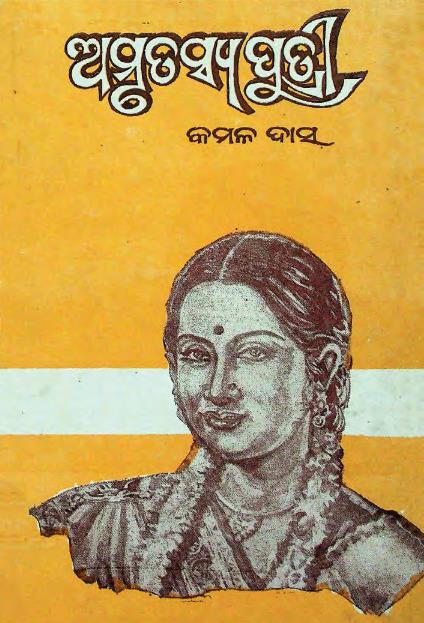Amrutasya Putri, a poignant narrative penned by Kamal Das and translated by Bansidhar Das, first published in 1986 and re-released in 1995, stands as a significant work in Odia literature. This sub-novel intricately weaves together themes of social injustice, the complexity of human relationships, and the pursuit of truth, reflecting the essence of life in rural India.
At its core, Amrutasya Putri, which translates to “Daughter of Immortality,” captures the essence of familial bonds, particularly the role of women in society. The protagonist, a young woman caught between traditional expectations and her yearning for independence, embodies the struggles faced by many women in Odisha. Das crafts her character with depth, highlighting her intelligence, resilience, and desire for a better future. Readers are drawn into her world, witnessing her battles against societal norms that often confine women to subservient roles.
Kamal Das’s narrative is notable for its vivid portrayal of the socio-economic landscape of rural Odisha. Through meticulous descriptions and rich characters, he provides insight into the challenges of poverty, caste discrimination, and the relentless pressure to conform. The author not only critiques these social issues but also emphasizes the importance of education as a tool for empowerment. The protagonist’s quest for knowledge becomes a central theme, symbolizing hope and the potential for change within her community.
The translation by Bansidhar Das plays a crucial role in making this poignant story accessible to a broader audience. His careful attention to the nuances of the original text ensures that the emotions and cultural contexts are preserved. This bilingual aspect of Amrutasya Putri not only celebrates the beauty of the Odia language but also invites readers from diverse backgrounds to engage with its themes.
Furthermore, Das’s narrative technique employs a mix of realism and symbolic elements, enriching the reading experience. The characters are not just individuals; they become representations of broader societal issues. For instance, the protagonist’s father, a traditionalist, reflects the older generation’s struggles with change, while peers from her village embody various facets of society’s response to progress. This interplay of characters fosters a deeper understanding of the complexities involved in the quest for identity and societal transformation.
As the story unfolds, it urges readers to confront difficult questions about the societal roles assigned to women and the necessity of breaking free from such constraints. The protagonist’s evolution is inspiring; she refuses to be defined solely by her relationships with men or traditional expectations. Instead, she seeks to carve her own path, ultimately becoming a beacon of hope for other women in her community.
In conclusion, Amrutasya Putri stands as a powerful indictment of social injustices while simultaneously celebrating the strength of women. Kamal Das’s masterful storytelling combined with Bansidhar Das’s skilled translation creates a text that resonates deeply with contemporary readers. As we delve into this compelling narrative, we are reminded of the importance of individual agency and the transformative power of literature in fostering social change. The themes explored in Amrutasya Putri remain timeless, urging us to reflect on our roles in advocating for a more equitable society. This sub-novel is not just a story; it is a call to action, inviting us to rethink and reshape our understanding of social dynamics in our lives.
Books Info
| Books name | Amrutasya Putri/ଅମୃତସ୍ୟ ପୁତ୍ର |
| Author | Kamal Das; Bansidhar Das, Tr. |
| No Of pages | 193 |
| Publisher | Pitambar Misra |
| Publication | 1986, 1995 2p. |
| Printed At | Jagannatha Process |
| Distributor | NA |

